Goldman Environmental Prize Winners
Air Date: Week of May 2, 2014
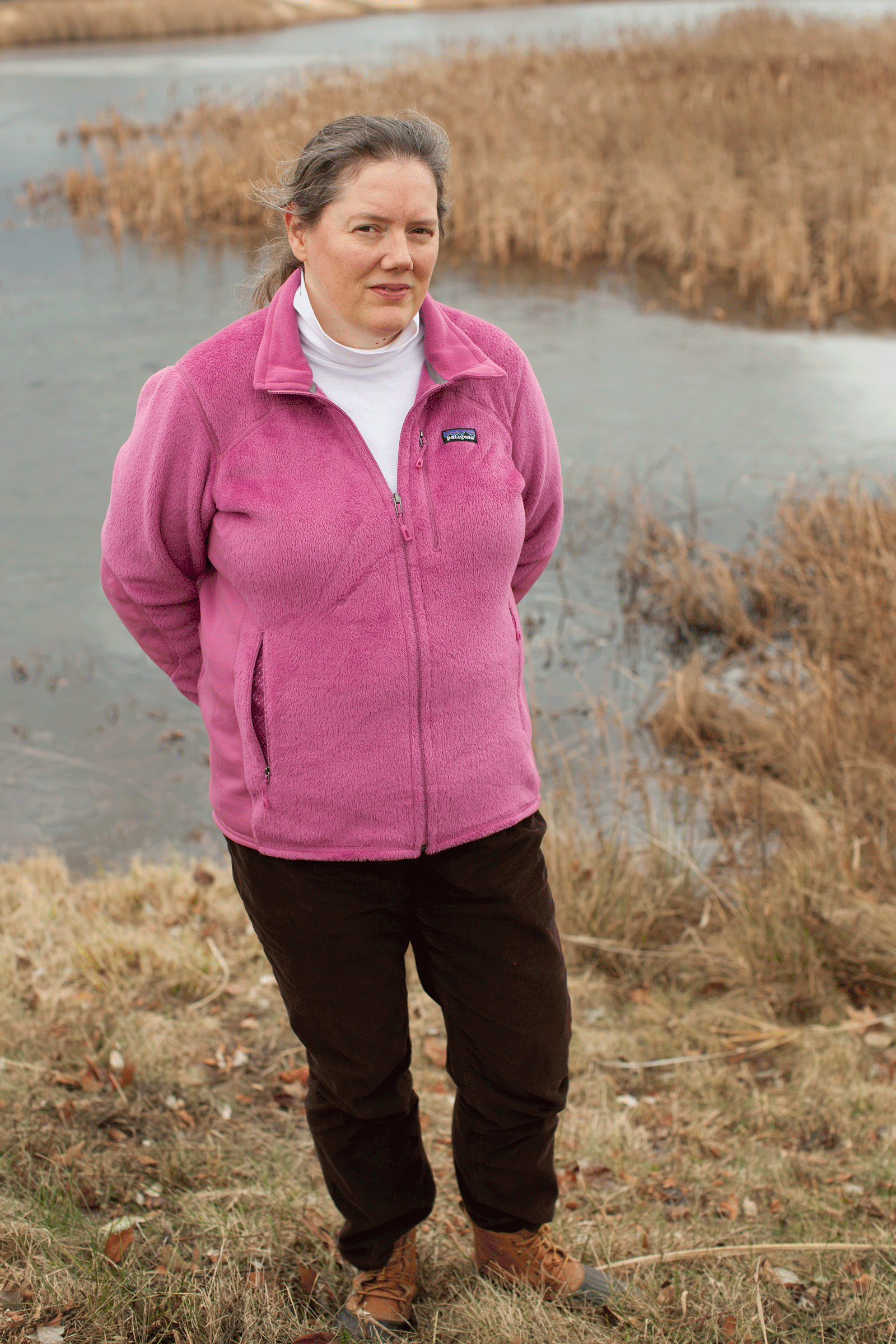
Helen Slottje near her home in Ithaca, NY (Photo: Goldman Environmental Prize)
Each year, one environmental activist from each of the six inhabited continents is awarded the Goldman Environmental Prize and a cash award. Host Steve Curwood talks with two of this year’s winners -- Helen Slottje from the US who helped nearly two hundred towns in upstate New York block fracking, and Desmond D’Sa from South Africa who worked to close a toxic landfill in his community of South Durban in KwaZulu Natal. Other 2014 Goldman Prize winners include Ramesh Agrawal of India, Suren Gazaryan of Russia, Rudi Putra of India and Ruth Buendia of Peru.
Transcript
CURWOOD: The Goldman Prizes are unofficially called the environmental Nobels. They single out an activist from each of the world’s inhabited continents with an award this year of $175,000. The 2014 recipients include Ramesh Agrawal from India who fought against the construction of new coal mines and Suren Gazaryan, who worked to expose the Russian government’s illegal seizure of protected forestland for construction of luxury homes. In Indonesia, Rudi Putra worked to protect endangered wildlife habitat from palm oil company deforestation. And Ruth Buendia fought against large scale hydroelectric dams that would have displaced indigenous communities in Peru.
We spoke with the two other 2014 Goldman Prize winners, Desmond D’Sa from South Africa and Helen Slottje from the United States. A former corporate lawyer, Ms. Slottje devised a strategy for local communities to block fracking in New York State, and explained how it came about.
SLOTTJE: My husband David's brother was looking for a small farm to move up to our area as a second home, and everywhere we went, there were gas leases, and the realtors told us, “Oh, it’s no big deal. It’s just a small oil and gas lease. Nothing to worry about.” And David was formerly a Texas lawyer and he said, “I’m from Texas, and there ain’t so such thing as a ‘no big deal oil and gas lease’.”
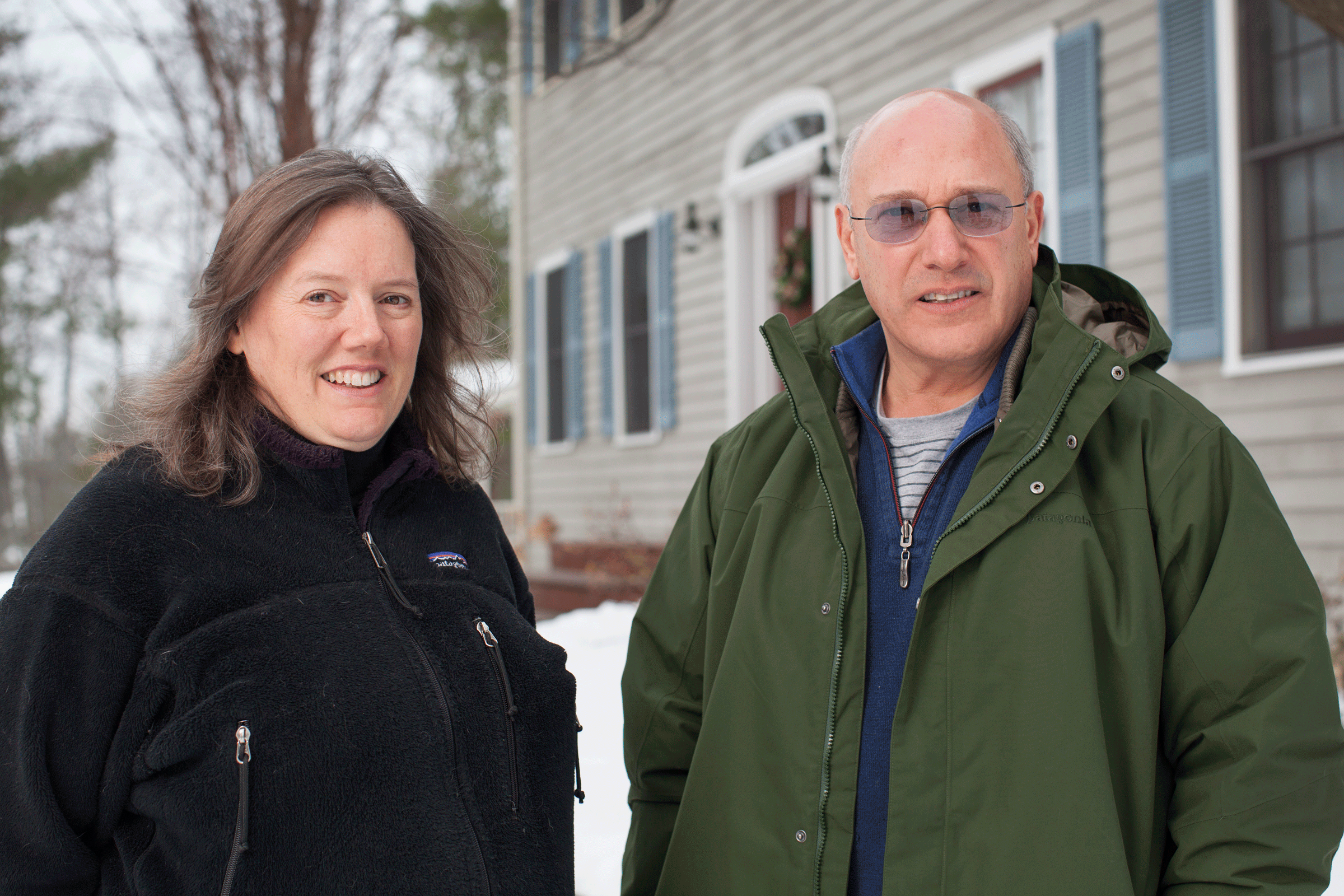
Helen Slottje and her husband David in front of their home in Ithaca, NY. (Photo: Goldman Environmental Prize)
And it took two years for us to sort of circle back to really getting involved, but that was the first sort of conscious-raising, and then in 2009, I went to a gas-drilling meeting, and they had pictures, and pictures of what had been happening in Pennsylvania. They were horrifying. There were these huge areas of land that had just been scraped bare, pits full of unknown fracking chemicals, and everyone said, “Well, there’s nothing we can do. This is coming. We should try to brace for impact. But we’re powerless.”
CURWOOD: But they didn’t know you would have a better idea, and what was that better idea?
SLOTTJE: David and I are both lawyers, so this just seemed wrong to us. And it just seemed there had to be something we could do. So we set about determining, you know, is the federal goverment going to protect us? No. Is the state government going to protect us? No. What can we do at the local level? And everyone said, “Nothing.” But we looked and found that while we couldn’t regulate the industry, they could use zoning laws to say, “there’s no place in our community where this is appropriate, this is an incompatible land use, and you’re not allowed to do this at all in our town”.
CURWOOD: In other words, just say no.
SLOTTJE: Right. Just say no. No fracking way.
CURWOOD: So, in the end, you started something of a small movement, but it spread across upstate New York. How did that work, and how did you feel?
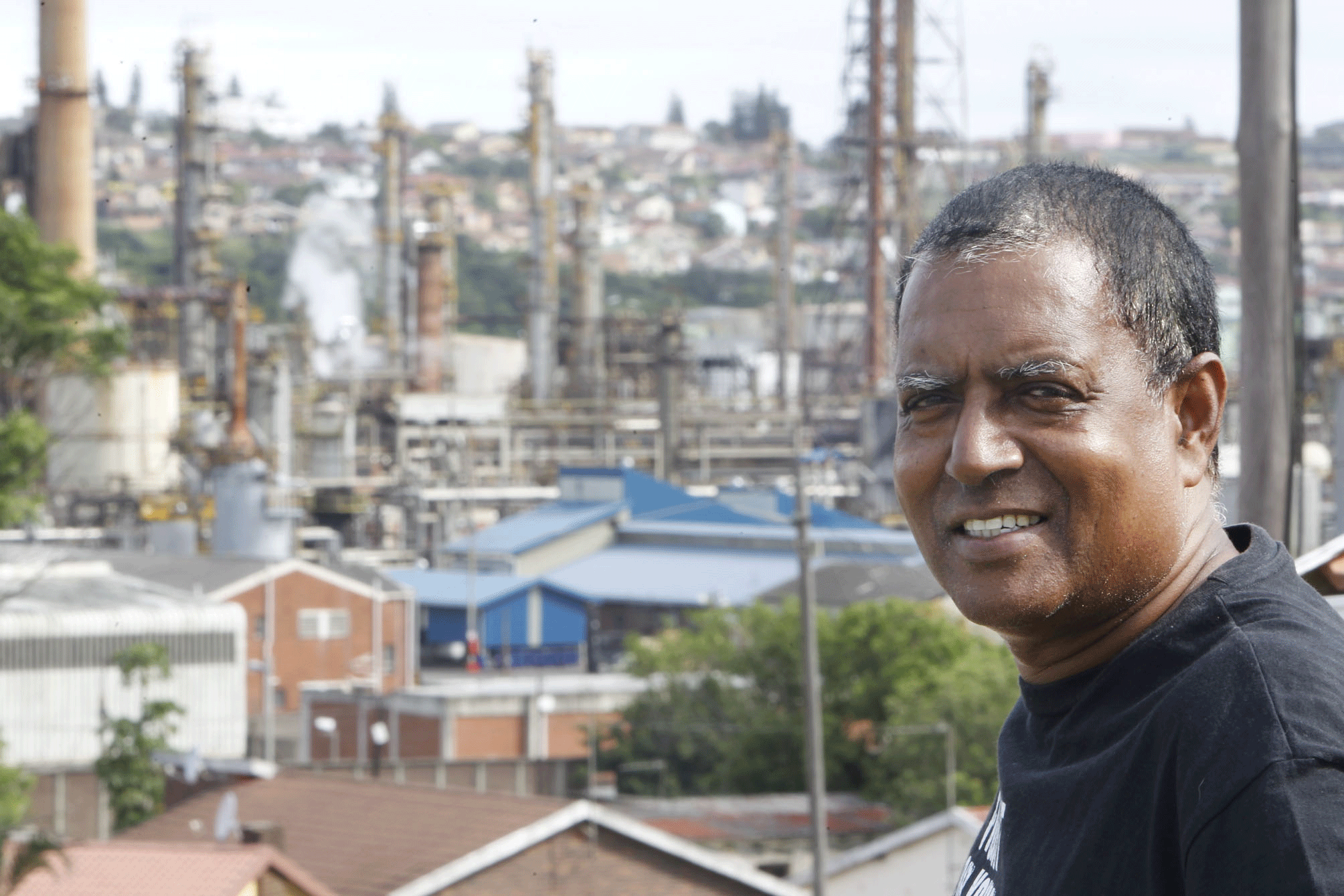
CAPTION (Photo: CREDIT)
SLOTTJE: It was amazing. We were developing this idea that a town could use zoning to prohibit these high-impact industrial uses, and we mentioned it at a meeting. And the people that heard us talk about this in one town went out and started a petition drive on their own to have their town be the first town to enact one of these laws. So we began drafting a law for the task force in that town and from there it took a lot of convincing for the first few towns, but after we had about seven or eight towns that passed these sort of laws, there was a paradigm shift where communities began to say, “Why don’t we have these laws?” So it went from seven to eight towns to now close to 200 towns have taken some sort of action passing a local law of one variety or another.
CURWOOD: So what’s the legal status of fracking in New York state right now? Now, the governor’s supposed to make a decision on fracking statewide. If he were to approve that how would that affect the communities who have banned fracking?
SLOTTJE: Well, those bans would still stand. The Department of Environmental Conservation in New York is conducting an environmental review, and the commissioner of the DEC ultimately reports to the governor, hence people talk about it as Governor Cuomo’s decision, although it’s really supposed to be the Department of Environmental Conservation. But if they were to find that fracking could be done safely, then that would leave open still this issue of local control, and Governor Cuomo himself has said that the idea of the concept of local control makes sense to him. The industry has challenged these local bans particularly in two lawsuits that are now waiting to be heard by the New York court of appeals. You never know for certain, but our expectation is that the court of appeals will uphold the trial court and the appelate court’s unanimous decision saying that, yes, towns can use zoning to prohibit gas drilling.
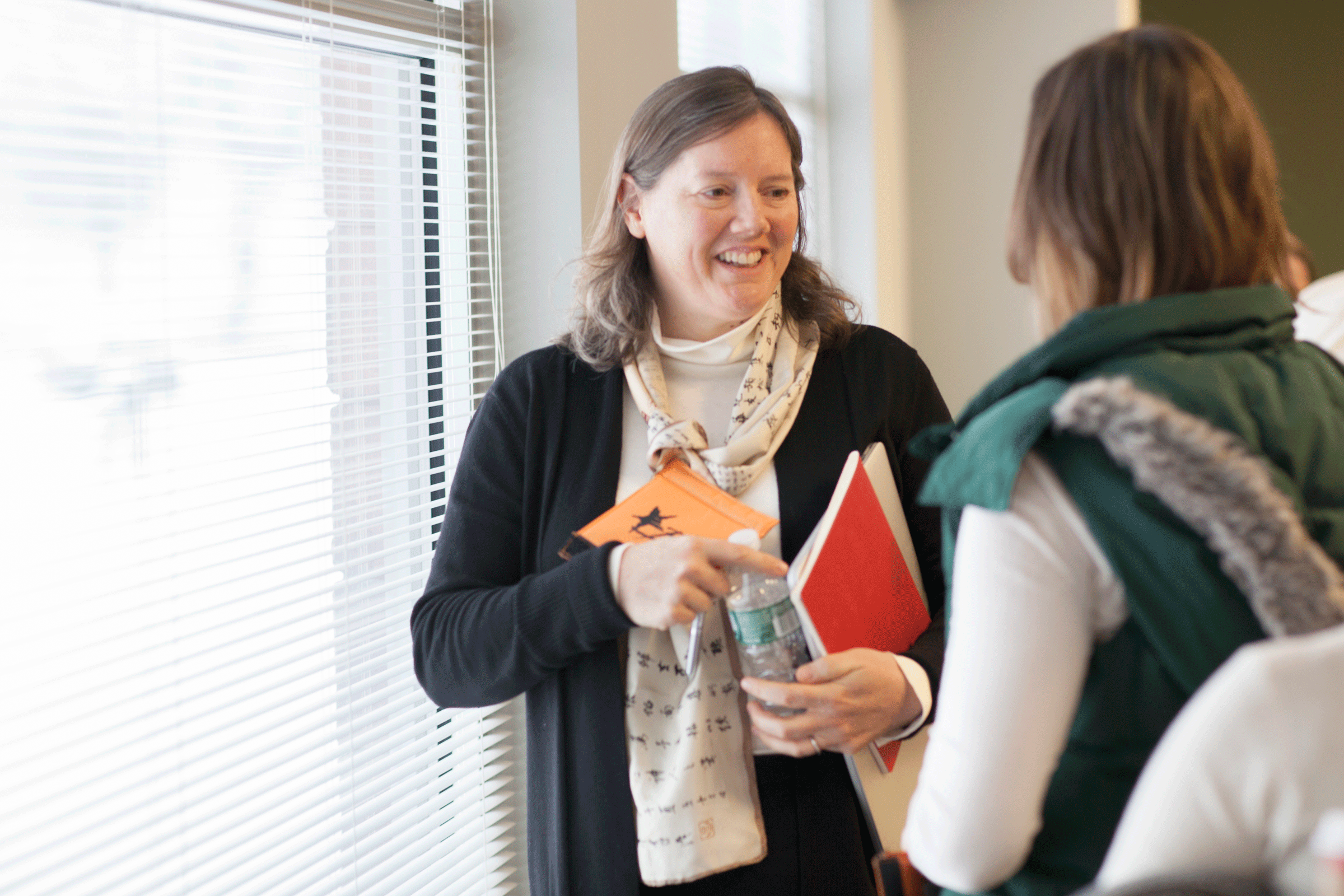
Helen Slottje talks with an audience member after a town meeting. (Photo: Goldman Environmental Prize)
CURWOOD: Helen, I want to turn now to another winner of the Goldman prize this year, Desmond D’Sa. Desmond D’Sa, please tell me about South Durban in South Africa, where you’re from.
D’SA: South Durban is the home of 70 percent of Durban’s industries and factories. It’s got over 300 smokestacks, and it’s got, including with the smokestacks, one of the biggest chemical storage facility in the southern hemisphere, two of the biggest petrochemical and crude oil refineries and paper mills and in amongst all that are people, and predominantly poor black folks.
CURWOOD: Now, how did your family come to live this part of Durban?
D’SA: Well, during the 1969 Separation Act during the apartheid era, that act separated people of color and displaced poor black communities and forced them out of the area where we came from. Where were lived there was clean running water, fresh air, clean soil where we planted our own vegetables in the garden, and forced and relocated to live alongside dirty industries in a four-room house which we call the state projects in South Africa.
src="//www.youtube.com/embed/ZNcJjkMee4w" frameborder="0" allowfullscreen>
CURWOOD: Well, I understand South Durban is also notoriously known as “cancer valley”. Tell me about some of the health problems people experience there.
D’SA: Over half the population have respiratory disease such as asthma, which is chronic asthma. Children in South Durban, the risk of cancer was 25 in 100,000 people, and the national norm was 1 in 100,000. We have a very high leukemia rate, just in a door-to-door study done by and confirmed by the Nelson Mandela medical school in Durban, was that the children in South Durban, their leukemia rate is 24 times the norm, and that’s besides all the skin rashes and other respiratory illnesses that children are affected with. What alerted me to all this was the constant government ambulances coming to my neighborhood at all hours of the day and night, bringing with them oxygen cylinders and nebulizers so that children could breathe freely.
CURWOOD: So, people were forced into this neighborhood back in apartheid, but as I understand it, the straw that broke the camel’s back for you came well after apartheid ended in 2009. Tell me about the toxic waste landfill that got you so concerned.
D’SA: Well, the toxic waste landfill had been operating for a number of years in black neighborhoods, and toxic landfill sites are never managed properly in South Africa. And in 2009, the waste company was wanting to expand the landfill site to three times its normal size, that would have made it the biggest landfill site in post-apartheid South Africa. We lobbied strongly, we engaged with the waste company and government, and during that period we were able to ensure instead of expanding, to turn around the discussion to closure. On November 15, 2011, a few days before the United Nations Conference of the Parties, COP 17 in Durban, the landfill site eventually was closed.
CURWOOD: Tell me about the things that were dumped in that toxic waste landfill there in South Durban. What were some of the chemicals you found?
D’SA: We found some heavy metals like cyanide and mercury. We found other toxic chemicals, ameliea acrolites, acrolites were dumped there, and basically all the heavy sludge from the recycling companies were dumped at the toxic landfill site, brought and dumped there.
CURWOOD: How did you feel about that living there?
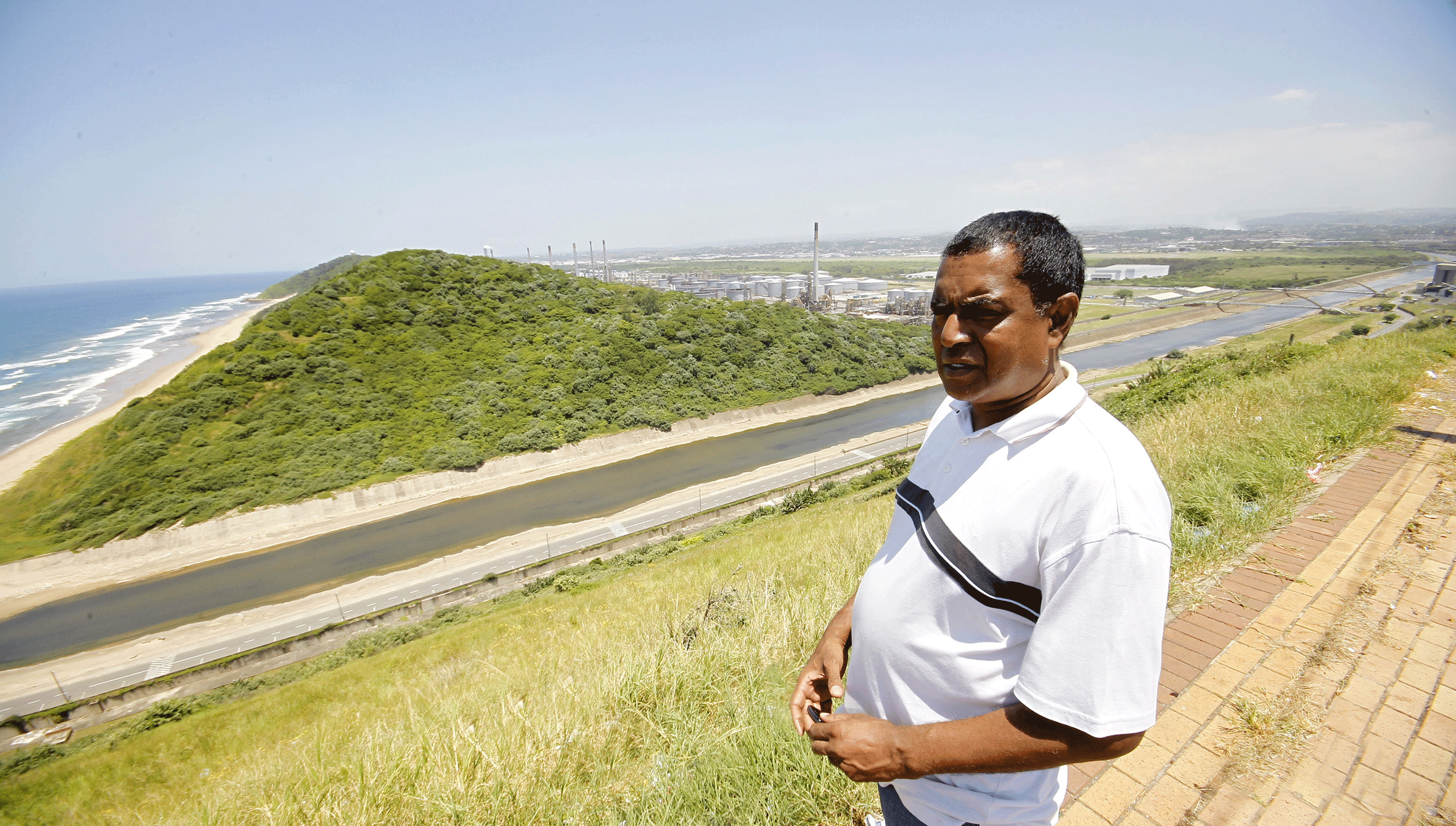
Desmond D’Sa surveying the area that will be affected by the proposed Port of Durban expansion. (Photo: Goldman Environmental Prize)
D’SA: Well, I was outraged about it. I must tell you, my personal experience, I’ve had a brother die of cancer in the area, I’ve had a daughter who’s had chronic asthma, and I’ve got a grandchild that’s got chronic asthma. After seeing a seven-year-old child diagnosed with leukemia, I decided then and there I was never going to give in, I was going to stand up, I was going to develop the data and gather all that information and make sure that toxic landfill sites were never going to be placed in black communities again.
CURWOOD: Now, your two stories have actually quite a bit in common. I understand that each of you were subject to intimidiation and harrassment from the industries you were fighting against. Helen, what kind of intimidation happened to you as you were taking on the fracking industry?
SLOTTJE: People would say that we weren’t competent lawyers, that my husband had failed the bar several times, which was not true. That what we were proposing would subject anyone who listened to us as town officials to personal liability, that industry would come and sue the town and not just the town, but these town board members individually and that the individual town board members would lose their homes if they were to take our advice. People would follow us around after meetings, yelling at us, following us out to our cars, they would videotape everything we said everywhere we went as proof that they were going to submit all of this as some sort of evidence that we were incompetent or committing malpractice.
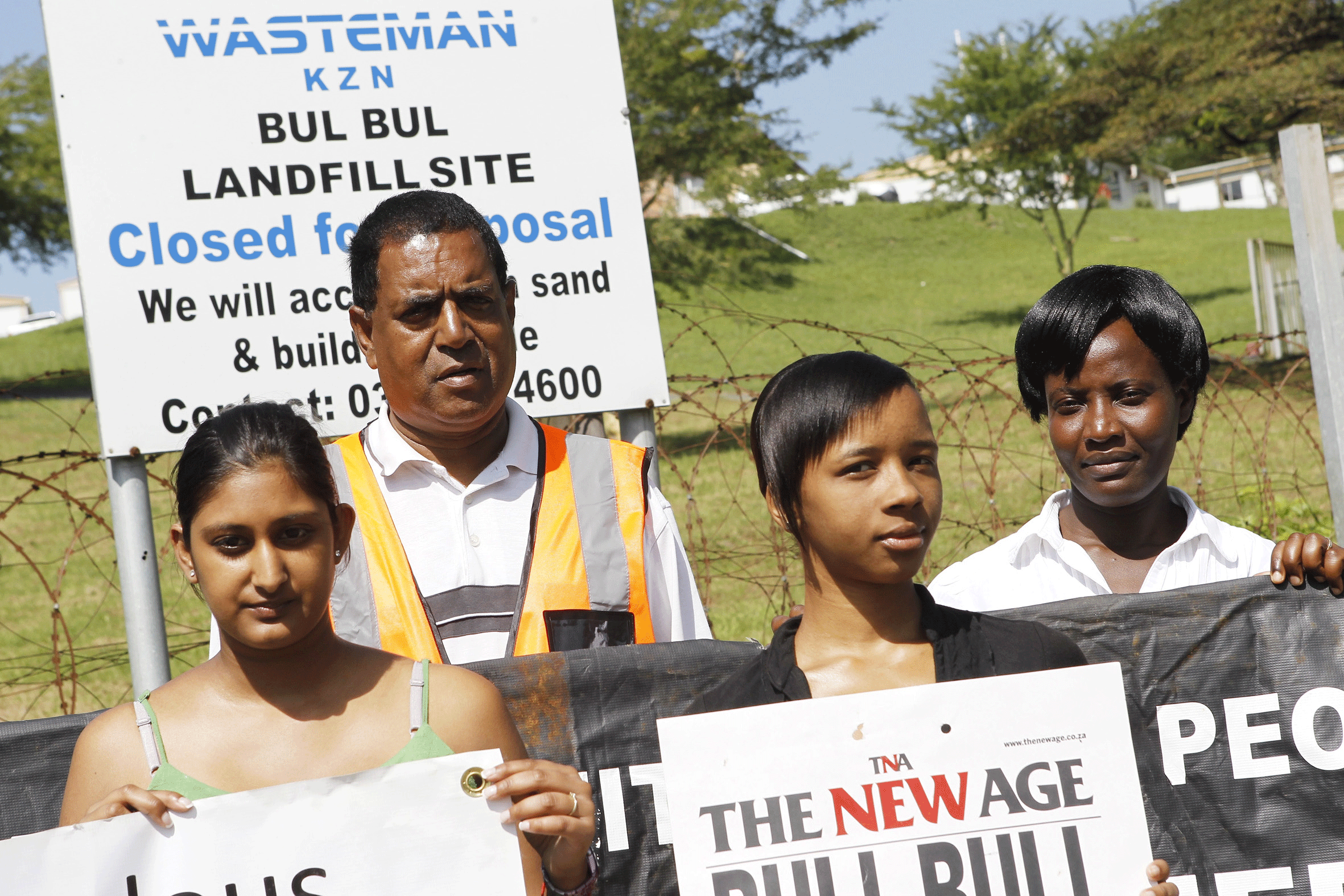
Desmond D’Sa and his team at the former site of the Bulbul Drive landfill in Durban, South Africa. (Photo: Goldman Environmental Prize)
CURWOOD: Desmond, tell me, what sorts of things happened to you?
D’SA: Well, there’s been a host of things happening to me. One was that my home was firebombed in 2007, resulting in one of my daughters being affected, traumatized, and myself being burned, facial burns, and I had burns all over my arms. My wife was traumatized so much so she left the area and didn’t live with me for a number of years, so I’ve had to pay the price. But when I was in the hospital, the very morning that my house was firebombed, I discharged myself out of the hospital because I knew there and then I had to go back and show my resolve and to show that no amount of threat or even attempts to kill me will deter me from doing what is right.
CURWOOD: Desmond, what’s next for you? Landfill is closed. Problem solved?
D’SA: Not really, you know, back home in Durban, since post-apartheid, we have the biggest social upheaval that will ever take place with the expansion of the Durban harbor. There’s a brand new dug-out port that’s going to link the present harbor, Durban is the biggest container port at the moment, and they want to expand it further, resulting in those who have suffered before as products of forced removal being removed once again. It took us 40 years to rebuild our homes, to rebuild stable communities, to build our own schools, to build recreational areas, and all this is under threat once again. What we are calling for is a sustainable business model that takes into consideration, that improves the community, that doesn’t allow community areas to be decayed, that provides access and sanitation and energy to poor communities living in humane conditions in South Durban.
src="//www.youtube.com/embed/_erEf4zI0BI" frameborder="0" allowfullscreen>
CURWOOD: Helen, what about you? What are you going to do if the state of New York now approves fracking?
SLOTTJE: Well, part of our work will be continue with the local bans in the state of New York. And we also want to use this opportunity with the Goldman prize to spread the word that communities have the right to decide what happens in their communities. And that’s one of the common threads between all of the prize recipients is this grassroots action, local action, and trying to work to inspire people to stand up and to say, “I’m not going to take this any more - this racism, this inequality, this inability to control our own destinies and to truly be secure in our own homes”. There are places across the country that are interested in learning more about what we did in New York and how it can be adapted to their state and so we’re looking to further our message as well.

Desmond D’Sa near his home in Durban, South Africa. (Photo: Goldman Environmental Prize)
CURWOOD: I want to thank you both for taking this time.
SLOTTJE: Alright, thank you so much.
D'SA: Thank you so much.
CURWOOD: Helen Slottje won the North America Goldman Prize this year for her work opposing fracking in New York State, and the Africa prize went to Desmond D'Sa of South Africa.
Links
2014 Goldman Environmental Prize winners, where there are videos of all six recipients.
Living on Earth wants to hear from you!
Living on Earth
62 Calef Highway, Suite 212
Lee, NH 03861
Telephone: 617-287-4121
E-mail: comments@loe.org
Newsletter [Click here]
Donate to Living on Earth!
Living on Earth is an independent media program and relies entirely on contributions from listeners and institutions supporting public service. Please donate now to preserve an independent environmental voice.
NewsletterLiving on Earth offers a weekly delivery of the show's rundown to your mailbox. Sign up for our newsletter today!
 Sailors For The Sea: Be the change you want to sea.
Sailors For The Sea: Be the change you want to sea.
 The Grantham Foundation for the Protection of the Environment: Committed to protecting and improving the health of the global environment.
The Grantham Foundation for the Protection of the Environment: Committed to protecting and improving the health of the global environment.
 Contribute to Living on Earth and receive, as our gift to you, an archival print of one of Mark Seth Lender's extraordinary wildlife photographs. Follow the link to see Mark's current collection of photographs.
Contribute to Living on Earth and receive, as our gift to you, an archival print of one of Mark Seth Lender's extraordinary wildlife photographs. Follow the link to see Mark's current collection of photographs.
 Buy a signed copy of Mark Seth Lender's book Smeagull the Seagull & support Living on Earth
Buy a signed copy of Mark Seth Lender's book Smeagull the Seagull & support Living on Earth

